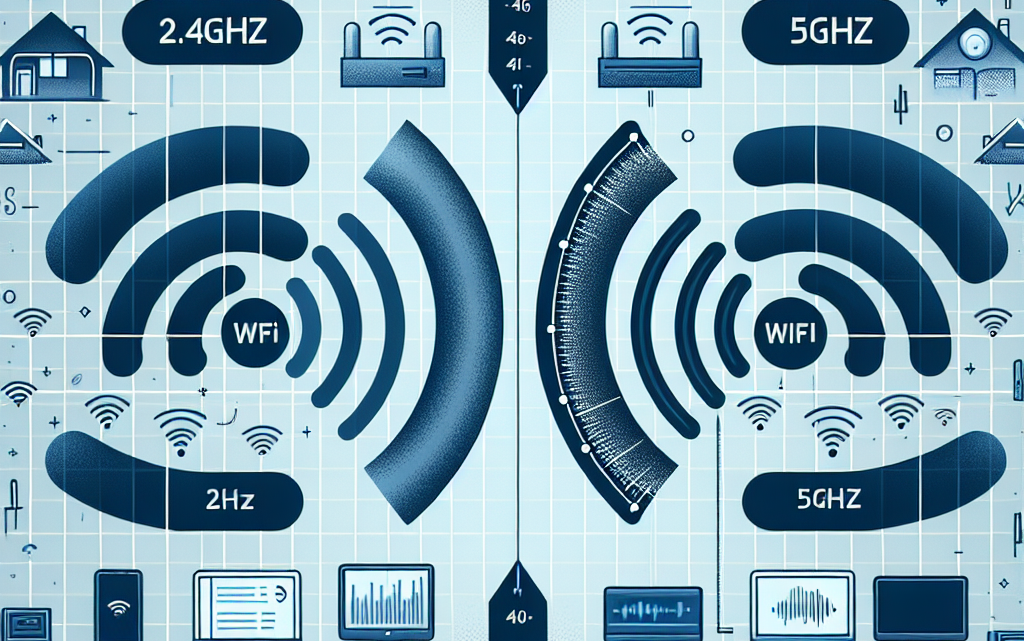Introduction
Choosing between 2.4GHz and 5GHz WiFi bands can be a complex decision, especially for those unfamiliar with these two frequencies. Each band has its own advantages and disadvantages, making it essential to understand their key differences to optimize your wireless network for specific needs.
Overview of 2.4GHz and 5GHz WiFi Bands
2.4GHz and 5GHz refer to the two frequency bands on which WiFi networks operate. These bands differ in terms of range, speed, and susceptibility to interference.
| Aspect | 2.4GHz | 5GHz |
|---|---|---|
| Frequency | 2.4GHz | 5GHz |
| Range | Longer | Shorter |
| Speed | Slower | Faster |
| Interference | Higher | Lower |
| Penetration | Better through walls | Weaker |
What is 2.4GHz WiFi?
The 2.4GHz band is the older and more commonly used frequency for WiFi networks. It offers extensive coverage and the ability to penetrate walls and obstacles more effectively.
Advantages of 2.4GHz
- Wider Range: 2.4GHz signals can travel further distances, making it ideal for larger homes and areas with multiple floors.
- Better Penetration: This frequency penetrates walls and other solid objects better than 5GHz.
Disadvantages of 2.4GHz
- Slower Speeds: Generally, 2.4GHz offers slower data transfer speeds compared to 5GHz.
- Higher Interference: More susceptible to interference from other devices such as microwaves, cordless phones, and Bluetooth devices.
What is 5GHz WiFi?
The 5GHz band is a more recent addition to WiFi networks, offering higher speeds and less congestion compared to the 2.4GHz band.
Advantages of 5GHz
- Faster Speeds: 5GHz can provide higher data rates, making it suitable for high-bandwidth activities like streaming HD video or online gaming.
- Lower Interference: Less crowded frequency range, leading to fewer interference issues from other devices.
Disadvantages of 5GHz
- Shorter Range: The coverage area is smaller than 2.4GHz, making it less effective for larger spaces.
- Poor Penetration: 5GHz signals struggle to penetrate walls and other obstacles.
Choosing Between 2.4GHz and 5GHz
The decision between 2.4GHz and 5GHz largely depends on your specific needs and environment. Below are some scenarios to help you decide:
When to Choose 2.4GHz:
- If you have a larger home and need the signal to cover more areas.
- When you require better penetration through walls and other obstacles.
- If you have older devices that do not support 5GHz.
When to Choose 5GHz:
- If you require faster internet speeds for activities like video streaming or online gaming.
- When you want to minimize interference from other household devices.
- If your environment is limited to a smaller area where coverage is not a primary concern.
Conclusion
Understanding the differences between 2.4GHz and 5GHz WiFi bands is crucial for optimizing your home or office network. While 2.4GHz excels in range and penetration, 5GHz offers superior speed and reduced interference. Assess your specific needs to make an informed decision on which band to use.

